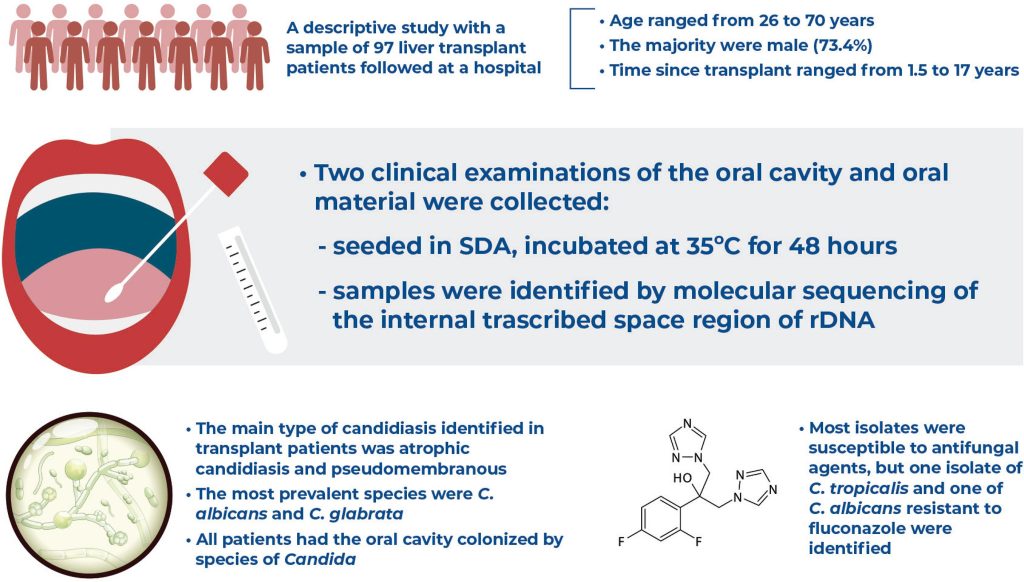einstein (São Paulo). 06/May/2024;22:eAO0138.
Oral candidiasis in liver transplant patients: species identification and antifungal susceptibility profile
DOI: 10.31744/einstein_journal/2024AO0138
Highlights
Fifteen liver transplant patients presented with oral candidiasis.
The two prevalent types of candidiasis were atrophic and pseudomembranous.
Candida albicans and Candida glabrata were the most prevalent species.
Most isolates were susceptible to antifungal agents.
ABSTRACT
Objective:
This study aimed to verify oral candidiasis, identify the causative species, and investigate the antifungal susceptibility of yeasts isolated from liver transplant patients.
Methods:
A descriptive analysis of 97 patients who underwent liver transplantation was conducted at a hospital. Two clinical examinations (Collections A and B) of the oral cavity were performed. Oral material was collected from all patients, inoculated in Sabouraud Dextrose Agar, and incubated at 35℃ for 48 hours. Samples were identified by molecular sequencing of the internal trascribed space region of rDNA.
Results:
An antifungal susceptibility test with fluconazole, amphotericin B, and micafungin was performed using the Clinical and Laboratory Standards Institute yeast broth microdilution method. Among the patients, 15 presented with oral candidiasis: eight in Collection A and seven in Collection B. The primary type of candidiasis was atrophic, followed by pseudomembranous candidiasis. The most prevalent species was Candida albicans (nine), followed by Candida glabrata (three), Candida tropicalis (two), and Candida dubliniensis (one). Regarding susceptibility to fluconazole, of the 15 samples, 11 were susceptible, three were susceptible in a dose-dependent manner, and one was resistant.
Conclusion:
The most commonly identified type of candidiasis was atrophic, with C. albicans and C. glabrata being the most prevalent causative species. One fluconazole-resistant isolate each of C. tropicalis and C. albicans were identified.
[…]
185

